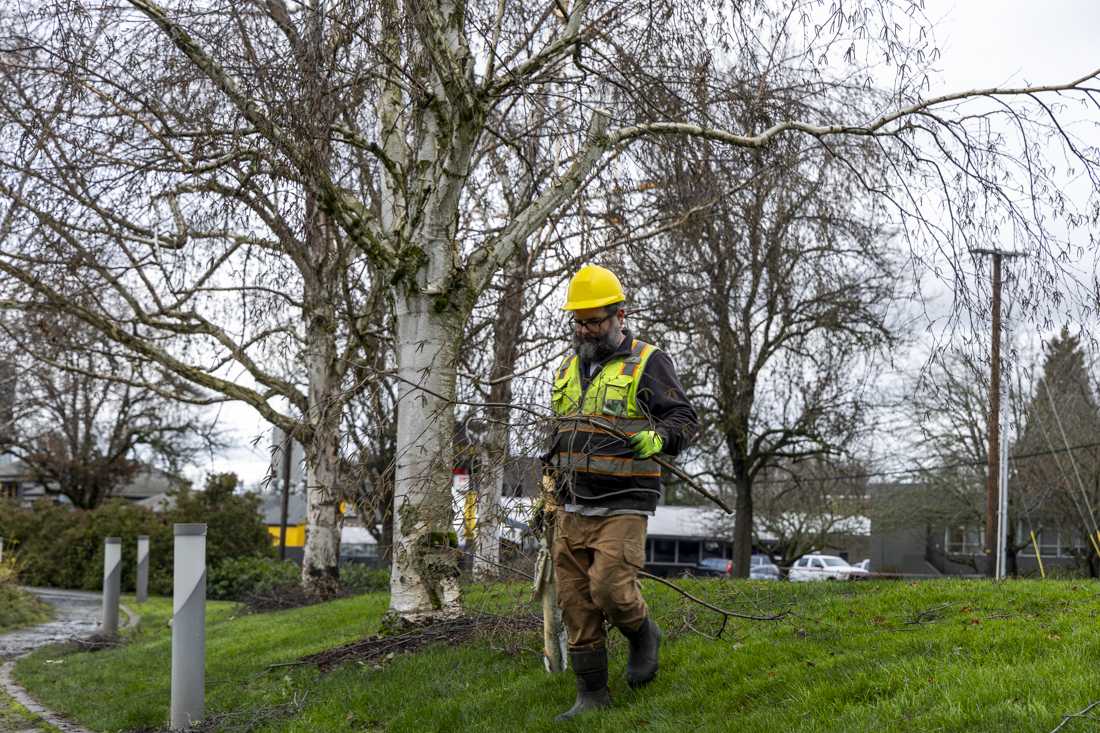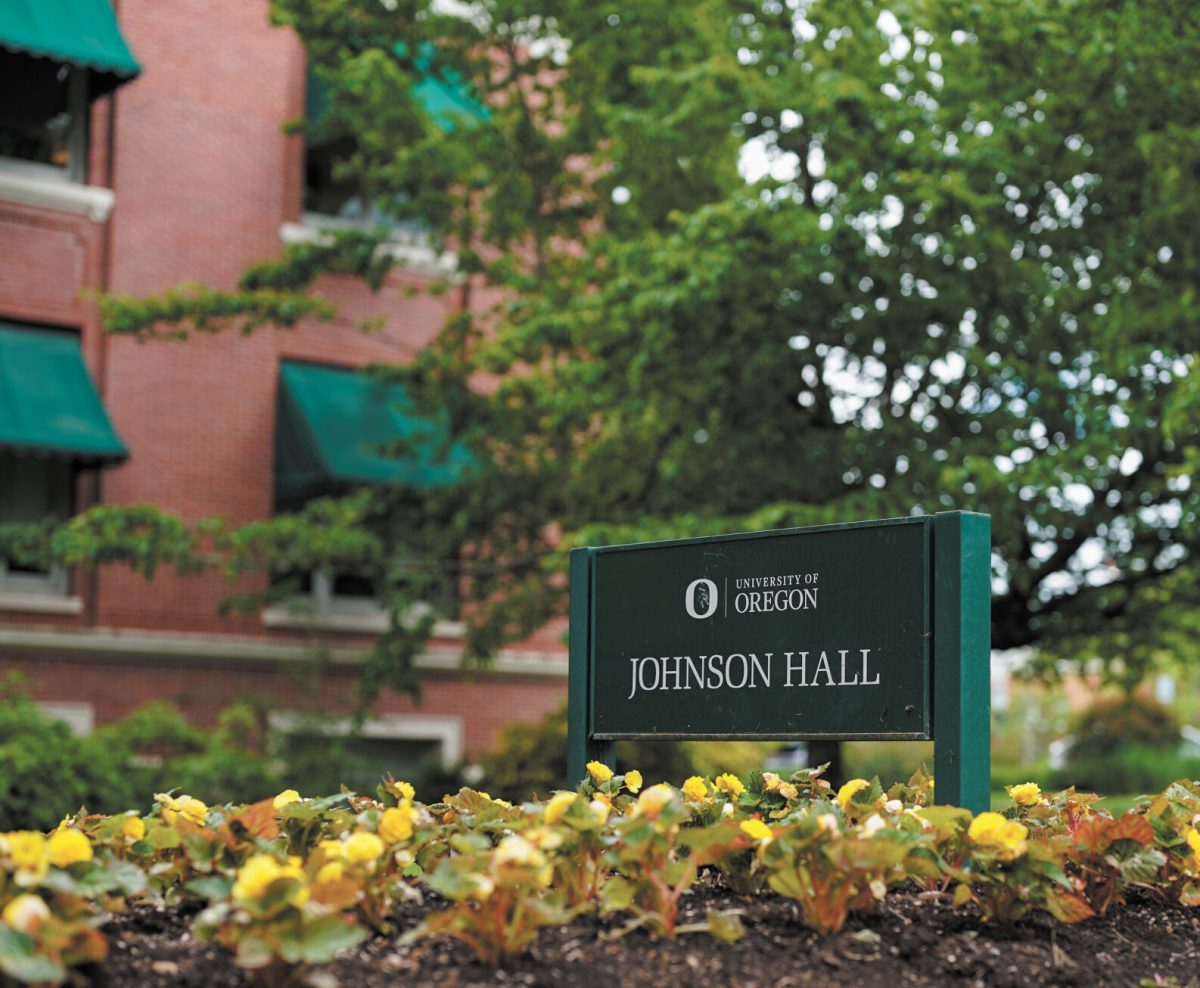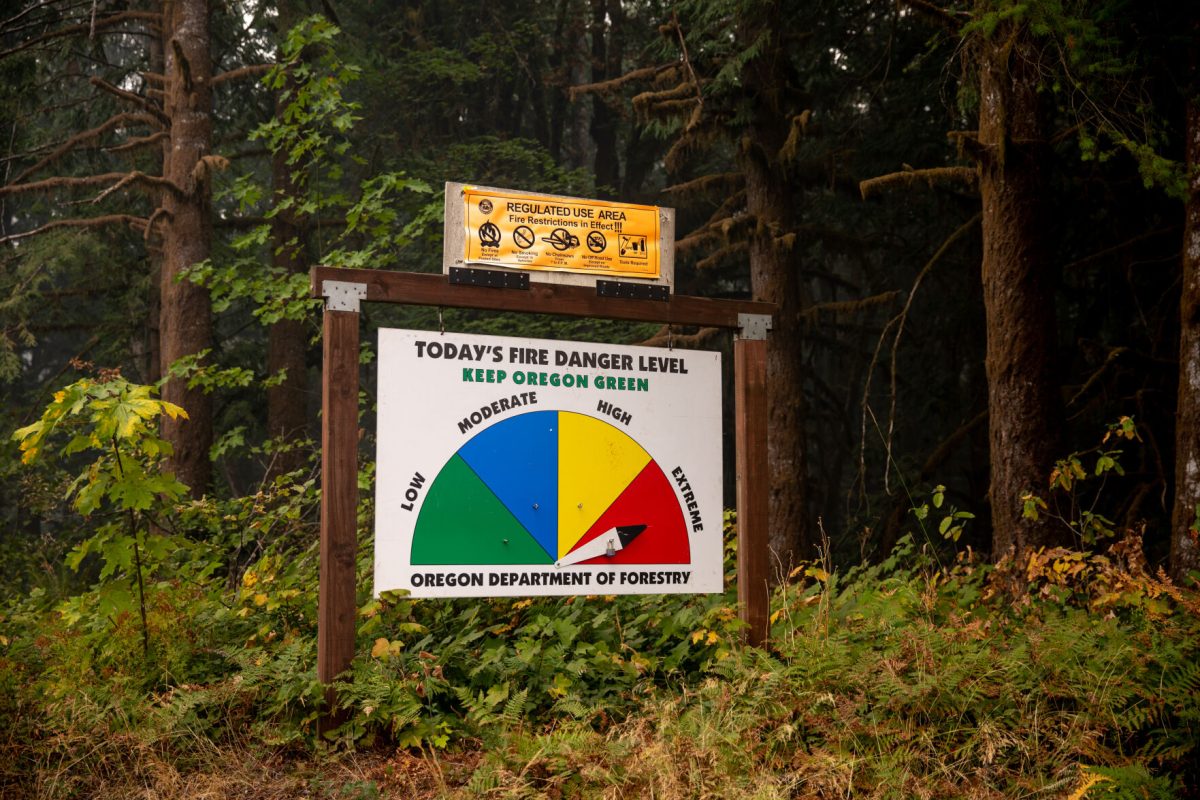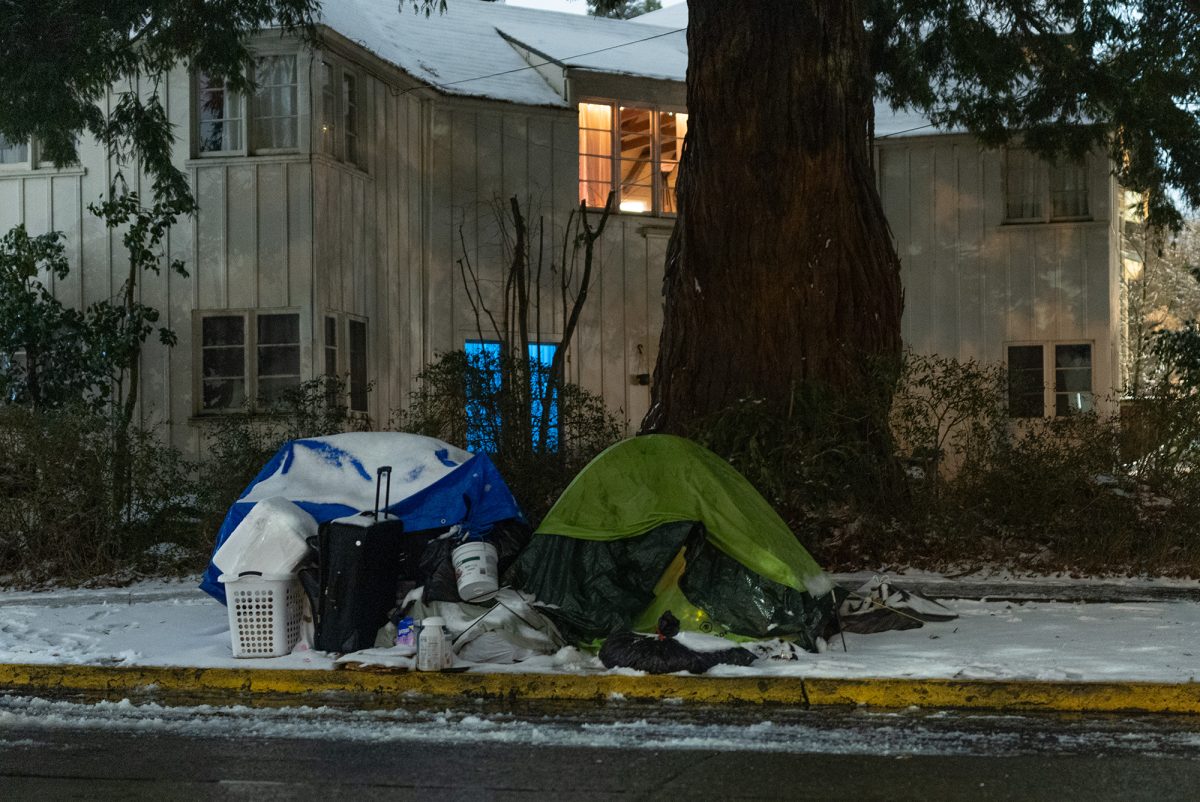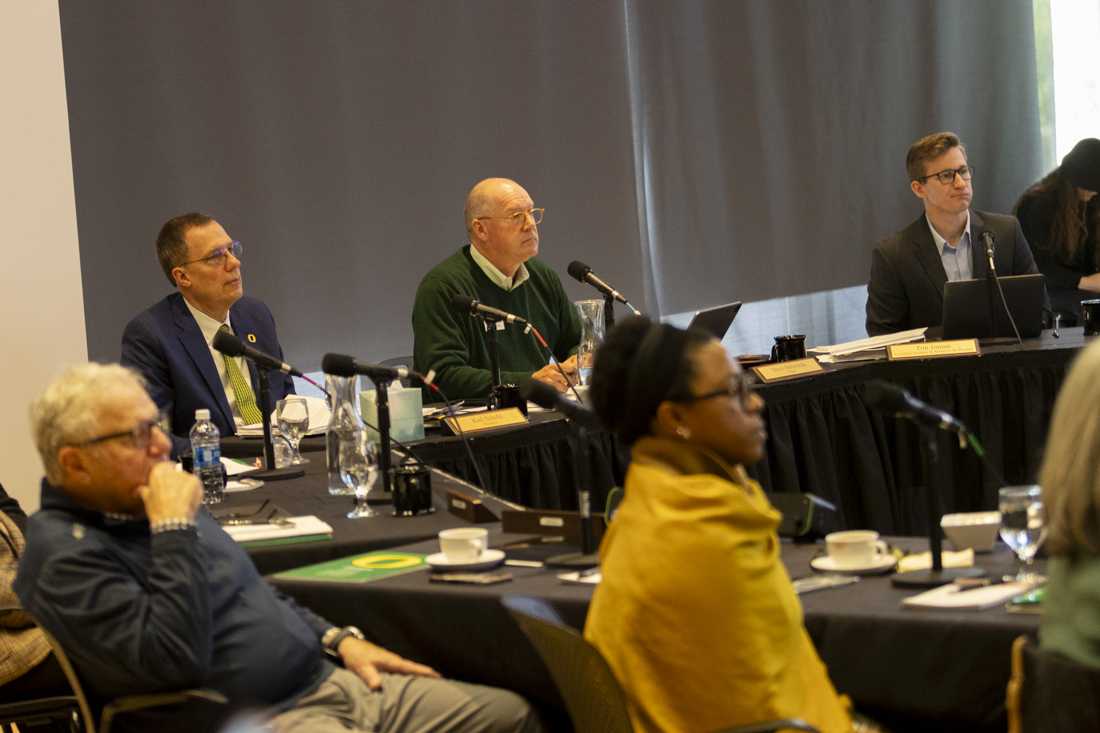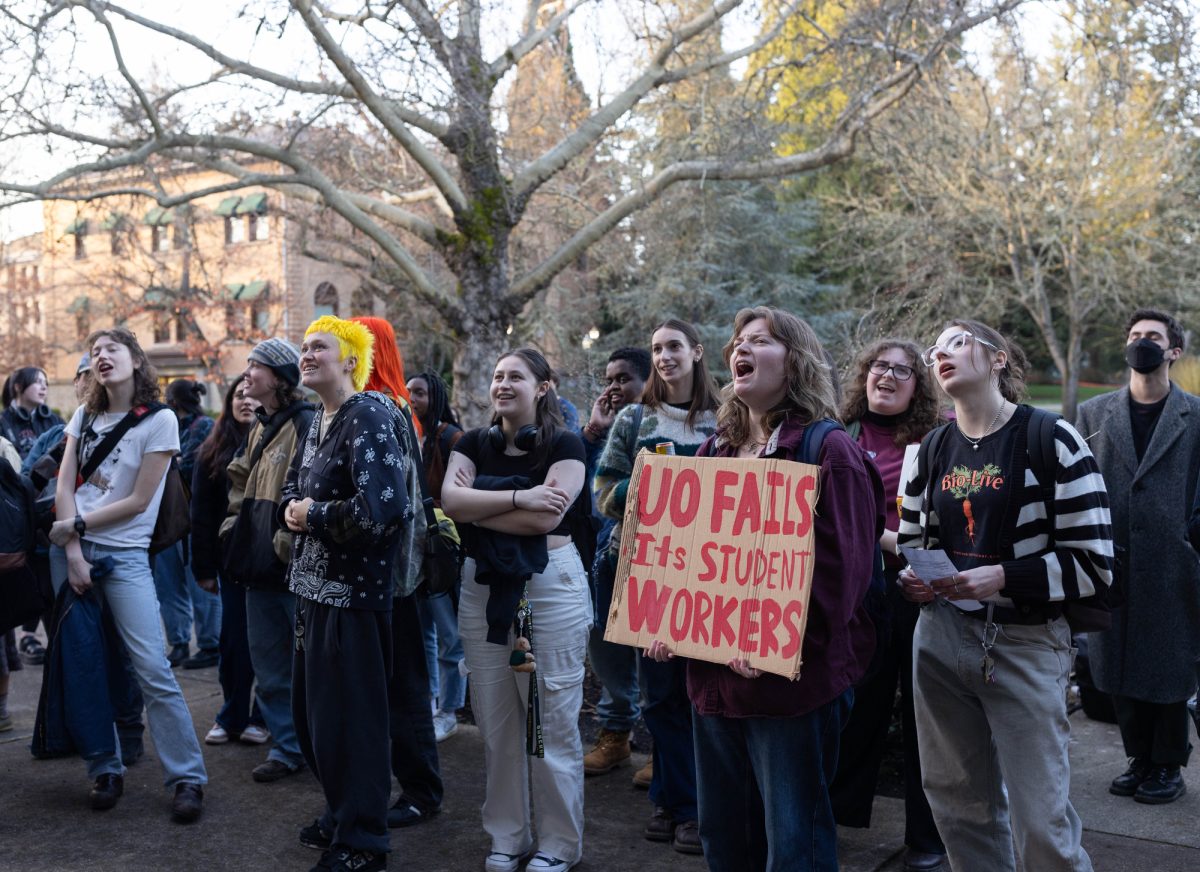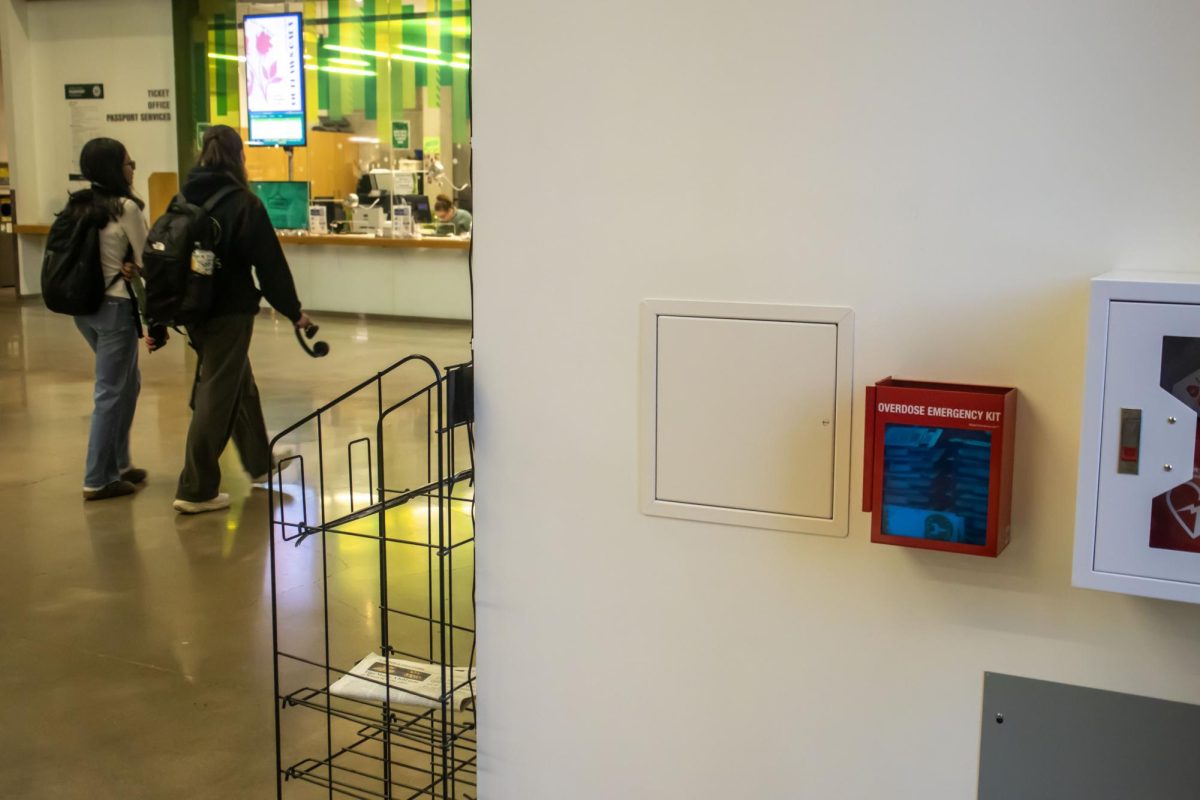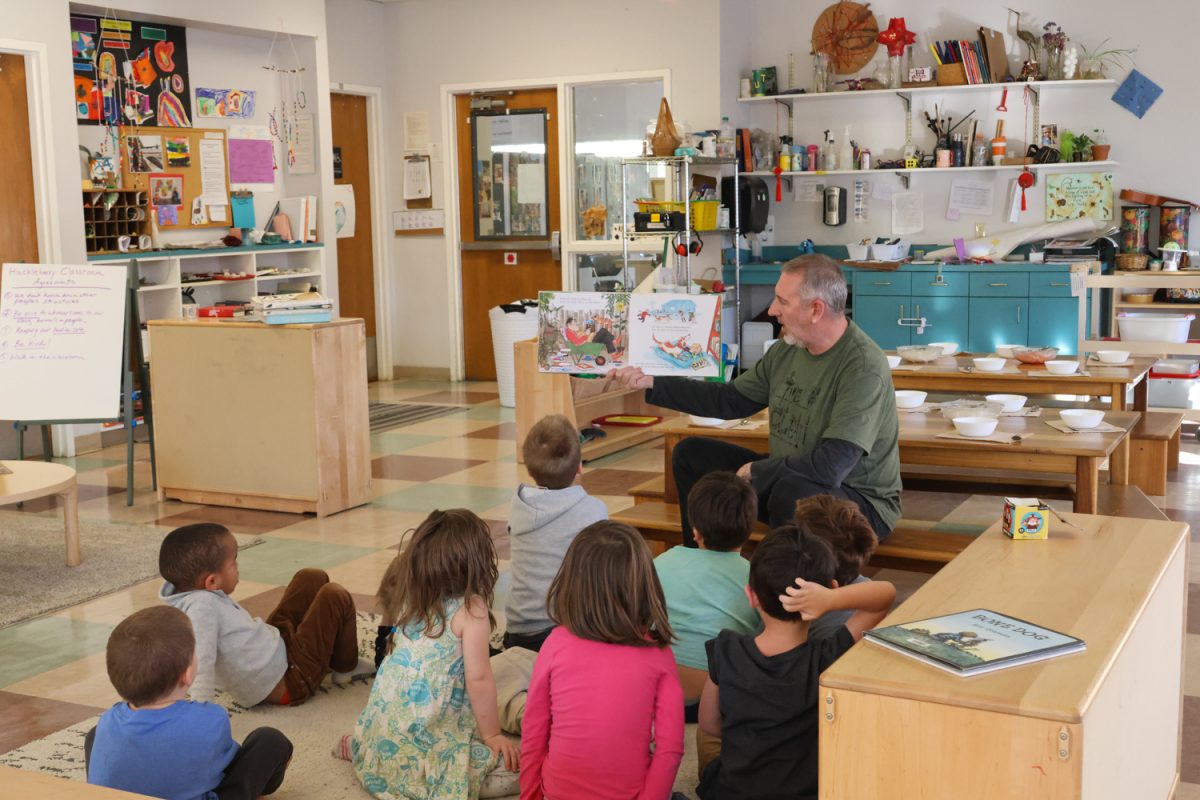The Campus Landscape and Grounds Maintenance team is hard at work to clean up fallen tree branches from the January ice storm while maintaining the rest of the trees on the UO campus.
The grounds crew, which is part of Campus Planning and Facilities Management, is responsible for maintaining the regular needs of campus landscaping, such as trimming, mowing, planting and more.
Becket DeChant, the campus arborist and maintenance labor coordinator for CPFM, focuses primarily on tree care and maintenance along with ground maintenance. DeChant said he acts as the “diplomat for human-tree-relations,” keeping up with the campus management plan while keeping students and the trees safe.
Sophomore psychology major Makena Smith noticed how well-maintained the campus was when she first started at UO and said the landscape is still well-maintained today.
“I thought [campus] was really beautiful,” Smith said. “Everything was really well maintained, all the landscaping is really cohesive and it works really well with the environment and the buildings in general. It is pretty impressive to see everything and it is definitely well maintained as the years have gone.”
The ice storm broke numerous tree branches and created a safety hazard on campus. CPFM had to block off the areas around the fallen branches with caution tape to ensure student safety.
“With the ice storm, it was interesting to see things being taken down and blocked off or put tape around it,” Smith said. “It could have been done better, like people were still getting injured or seeing it in the way or something.”
UO’s campus primarily has two types of trees: deciduous and evergreen trees. Deciduous trees shed their leaves in the fall and regrow them in the spring, while evergreen trees keep their leaves year-round. The type of tree influences how they are cared for, DeChant said
“We [grounds maintenance] do a lot of work on our deciduous trees in the wintertime when they are dormant,” DeChant said. “We can make bigger cuts and do things that would not disrupt their growth patterns. Of course, with evergreen trees, you’re always disrupting the growth pattern, so there is always work to be done on evergreen trees.”
DeChant said most trees on campus cannot exist on their own and require consistent maintenance. His job is to keep an eye on the trees and determine whether they are healthy and remove dead or broken trees that may be dangerous.
The grounds crew maintains the campus trees through various methods, such as pruning, branch removal and tree removal if necessary. They prune trees to maintain the overall health of a tree, prevent their branches from rubbing other tree branches and prevent the branches from becoming a traffic or building hazard due to elevation, DeChant said.
According to the U.S. Forest Service, ”pruning can best be used to encourage trees to develop a strong structure and reduce the likelihood of damage during severe weather. Removing broken or damaged limbs encourage wound closure.”
Fallen tree branches, leaves, weeds and more are referred to as green waste, or biological waste that can be decomposed. The crew gathers the green waste in what they call the “hot pile” on north campus or north of Franklin avenue, DeChant said.
Once the biowaste is gathered it is placed in a large grinder and grinded down into mulch or a layer of material applied to the surface of soil. Mulch has many benefits to the soil, like water conservation, temperature moderation, reduction of competition and more, according to the U.S. Department of Agriculture.
“We [grounds maintenance] are trying to reuse it on campus as much as possible. We tried to turn it into a product that can be used somewhere else,” DeChant said. “What we don’t want to do is send it off anywhere where it just gets dumped.”
Large tree branches require a different removal approach compared to the smaller branches. The grounds crew must first mitigate the hazards to students on campus by blocking off sections of campus with caution tape. From there, the crew can look at the damage caused by the ice storm, DeChant said.
“What we [grounds maintenance] have done from ice forming until today (Jan. 30) is basically pick up things that have dropped and try to mitigate the biggest hazards to the campus community,” DeChant said. “Once we catch up to that, which we are getting close to at least on the main campus, we will start looking at the damage the ice did to the trees still standing.”
After removing the first wave of fallen tree branches, the grounds crew will bring down a second wave of wood throughout the spring. DeChant said the second wave of wood could be an equal amount to the first wave. Some trees will also be removed because they will not regrow.
DeChant said he and the rest of the maintenance staff are still working on cleaning up the remaining fallen branches on campus. Cleanup is being prioritized by safety concerns while meeting the regular needs of campus.
“[Students] should expect to see branches, trees and caution tape around campus for some time,” DeChant said. “The ice storm was hard on campus trees. We lost a few large, old trees, and many more were damaged. This was the second major ice storm on campus in seven years.”
DeChant expects the campus to be back to normal by the beginning of the next school year. For more information on downed trees and the effects of the ice storm, students can view the winter map, which displays information about winter conditions and hazardous areas on campus.
Eugene Public Works maintenance staff clear the branches of a tree that was uprooted by the recent winter storm from Alder St. and the nearby sidewalk on Jan. 23, 2024. A statewide emergency was declared by Oregon governor Tina Kotek on Jan. 18, 2024, as a winter storm brought heavy snow and ice, causing power outages, traffic crashes, knocking over trees and other weather-related issues. (Alex Hernandez/Emerald)



